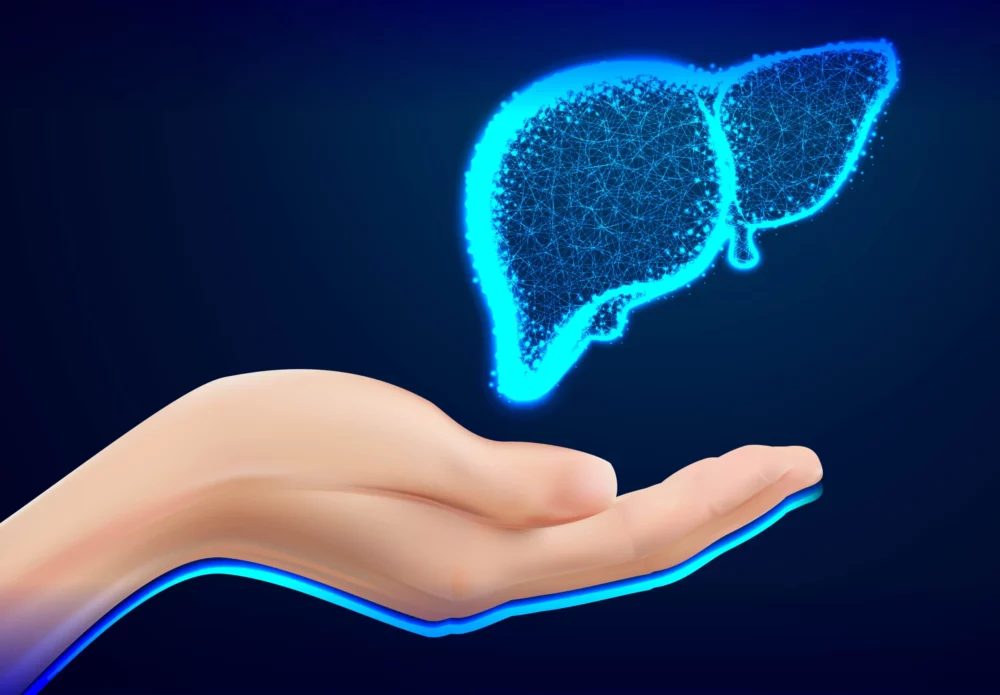The liver plays a central and multifaceted role in the regulation of glucose in the human body. Glucose, a simple sugar, serves as the primary source of energy for cells, and maintaining its levels within a narrow range is crucial for overall health. The liver accomplishes this through various mechanisms, which we’ll explore in detail in this article.
1. Glycogen Storage and Release
One of the liver’s primary functions in glucose regulation is to store glucose in the form of glycogen when blood sugar levels are elevated, typically after a meal. When you consume carbohydrates, they are broken down into glucose, which enters the bloodstream. Excess glucose is taken up by the liver and converted into glycogen. This glycogen serves as a readily accessible storage form of glucose.
Conversely, when blood glucose levels drop between meals or during periods of increased energy demand, the liver can break down glycogen into glucose through a process called glycogenolysis. This released glucose is then released into the bloodstream to maintain stable blood sugar levels. Glycogen serves as a short-term reserve, ensuring a constant supply of glucose is available when needed.
2. Gluconeogenesis
The liver’s versatility extends to producing glucose from non-carbohydrate sources, a process known as gluconeogenesis. During fasting, between meals, or during periods of intense physical activity, the body’s energy demands may exceed the available glucose supply. In response, the liver can synthesize glucose from substrates like amino acids (from proteins) and glycerol (from triglycerides).
Gluconeogenesis is vital for maintaining blood glucose levels during prolonged fasting or when dietary carbohydrates are limited. It ensures that the brain and other glucose-dependent tissues receive a consistent supply of energy.
3. Glucose Uptake and Storage
The liver acts as a glucose “sponge” when blood sugar levels are high. In the post-meal state, especially after consuming carbohydrates, blood glucose levels rise. The liver can take up excess glucose from the bloodstream, converting it into glycogen for storage.
This uptake and storage help prevent hyperglycemia, or excessively high blood sugar levels, which can have detrimental effects on various organs and tissues. By acting as a temporary reservoir for glucose, the liver contributes to the maintenance of blood glucose homeostasis.
4. Glucose Release
Conversely, when blood sugar levels drop between meals or during periods of increased energy demand, the liver can release glucose back into the bloodstream. This process is crucial for preventing hypoglycemia, or low blood sugar levels, which can lead to symptoms like weakness, dizziness, and confusion.
The liver receives hormonal signals, primarily from insulin and glucagon, to regulate its glucose-releasing activities. Insulin, released by the pancreas when blood glucose levels are elevated (e.g., after eating), promotes glucose storage as glycogen in the liver. On the other hand, glucagon, released when blood glucose levels are low, stimulates the liver to break down glycogen into glucose and release it into the bloodstream.
5. Hormonal Regulation
The liver’s involvement in glucose regulation is tightly controlled by hormones. Insulin and glucagon, produced by the pancreas, play pivotal roles in coordinating liver activity to maintain blood glucose levels within a narrow range.
Insulin: When blood glucose levels rise after a meal, the pancreas releases insulin into the bloodstream. Insulin signals the liver to take up glucose and convert it into glycogen for storage. It also promotes glucose uptake by muscle and fat cells, reducing blood sugar levels.
Glucagon: In response to falling blood glucose levels between meals or during fasting, the pancreas releases glucagon. Glucagon signals the liver to break down glycogen into glucose and release it into the bloodstream, raising blood sugar levels.
These hormonal signals create a delicate feedback loop that ensures glucose regulation remains finely tuned, responding to the body’s immediate needs.
6. Detoxification and Maintenance of Glucose Metabolism
The liver plays a vital role in detoxifying harmful substances from the body. In the process, it may release glucose as a byproduct. This ensures that even during detoxification processes, a supply of glucose is maintained to support critical bodily functions.
7. Regulation of Postprandial Blood Sugar Levels
After a meal, the liver works in concert with other organs to regulate postprandial (after-meal) blood sugar levels. It acts as a “traffic cop” that controls the release and storage of glucose to maintain a balance between energy utilization and storage.
8. Regulation of Overnight Fasting Glucose Levels
During overnight fasting, when you’re not consuming food, the liver is responsible for providing a steady supply of glucose to prevent hypoglycemia. It achieves this by breaking down glycogen into glucose through glycogenolysis and by engaging in gluconeogenesis.
9. Adaptation to Stress and Energy Demand
The liver is highly adaptable and can rapidly adjust its glucose-regulating activities in response to changing circumstances. In situations of stress, illness, or increased physical activity, it can release glucose into the bloodstream to provide an immediate source of energy.
10. Coordination with Other Organs
While the liver plays a central role in glucose regulation, it does not operate in isolation. It interacts closely with other organs and tissues, including the pancreas, muscle, adipose tissue, and the brain, to coordinate glucose homeostasis. These interactions are mediated by hormones and signaling molecules that ensure a seamless and integrated response to changing blood sugar levels.
In conclusion, the liver is a dynamic and essential organ in the regulation of glucose in the human body. Its multifaceted roles encompass glucose storage, release, production, and maintenance. By orchestrating these processes in response to hormonal signals and the body’s energy demands, the liver helps ensure that blood glucose levels remain within a narrow and vital range, supporting overall health and metabolic function. The liver’s ability to adapt to various circumstances and its close coordination with other organs exemplify its crucial role in glucose regulation.





Leave a Reply
You must be logged in to post a comment.